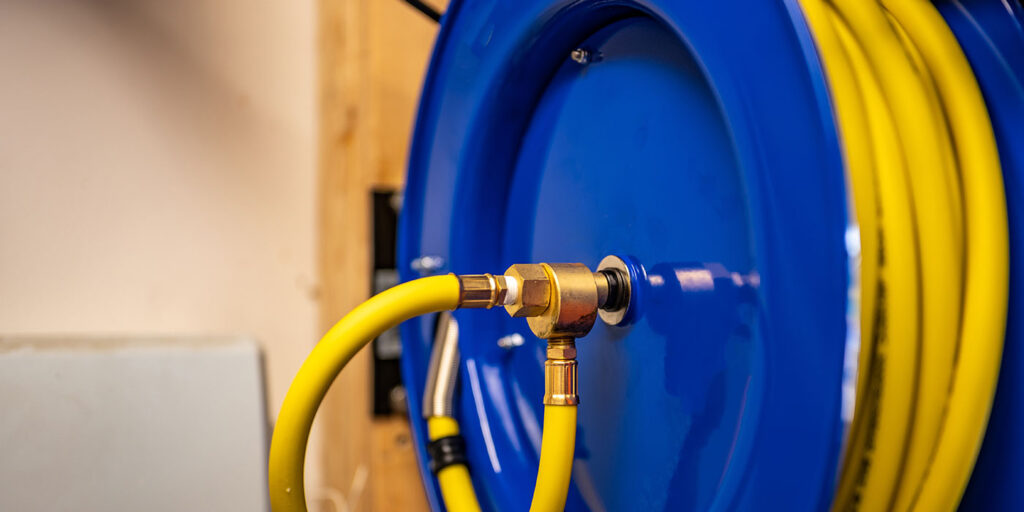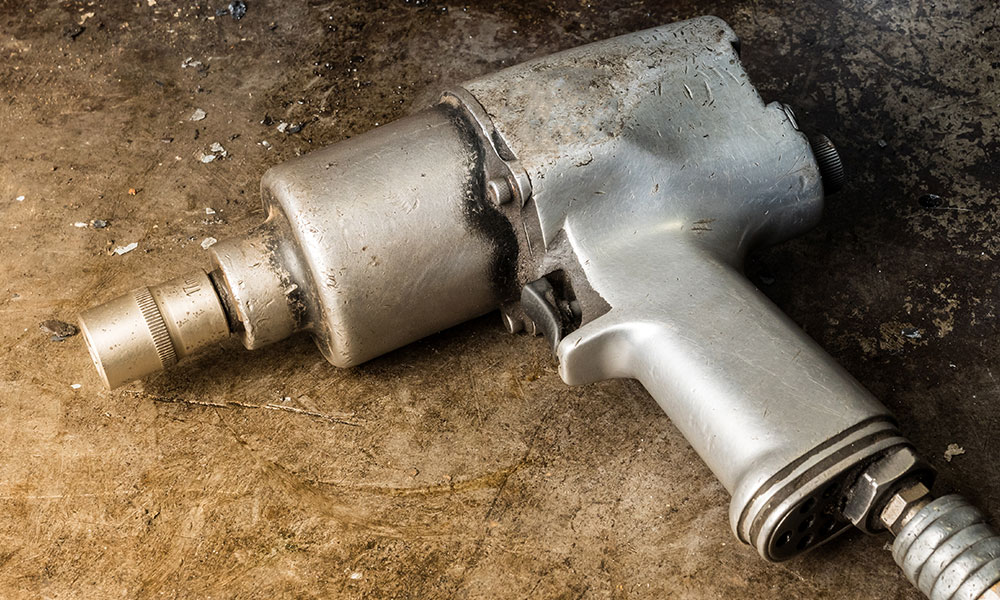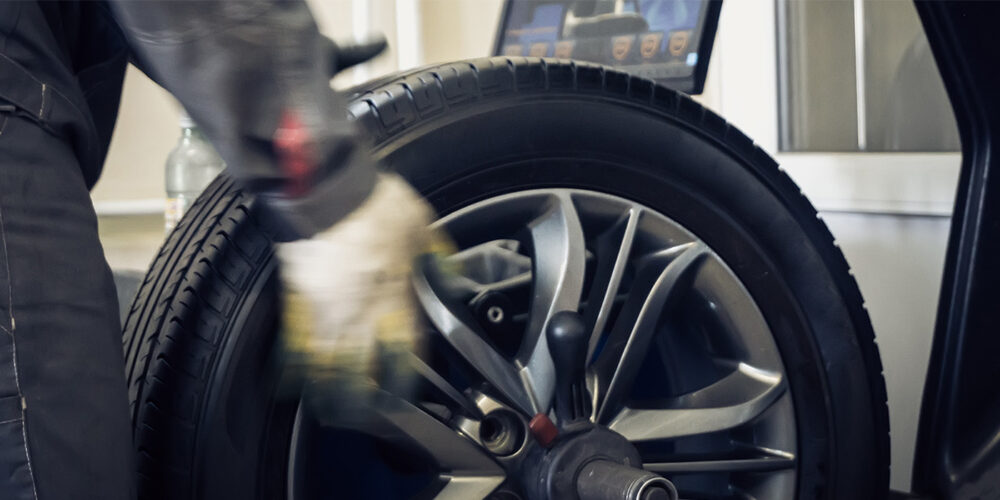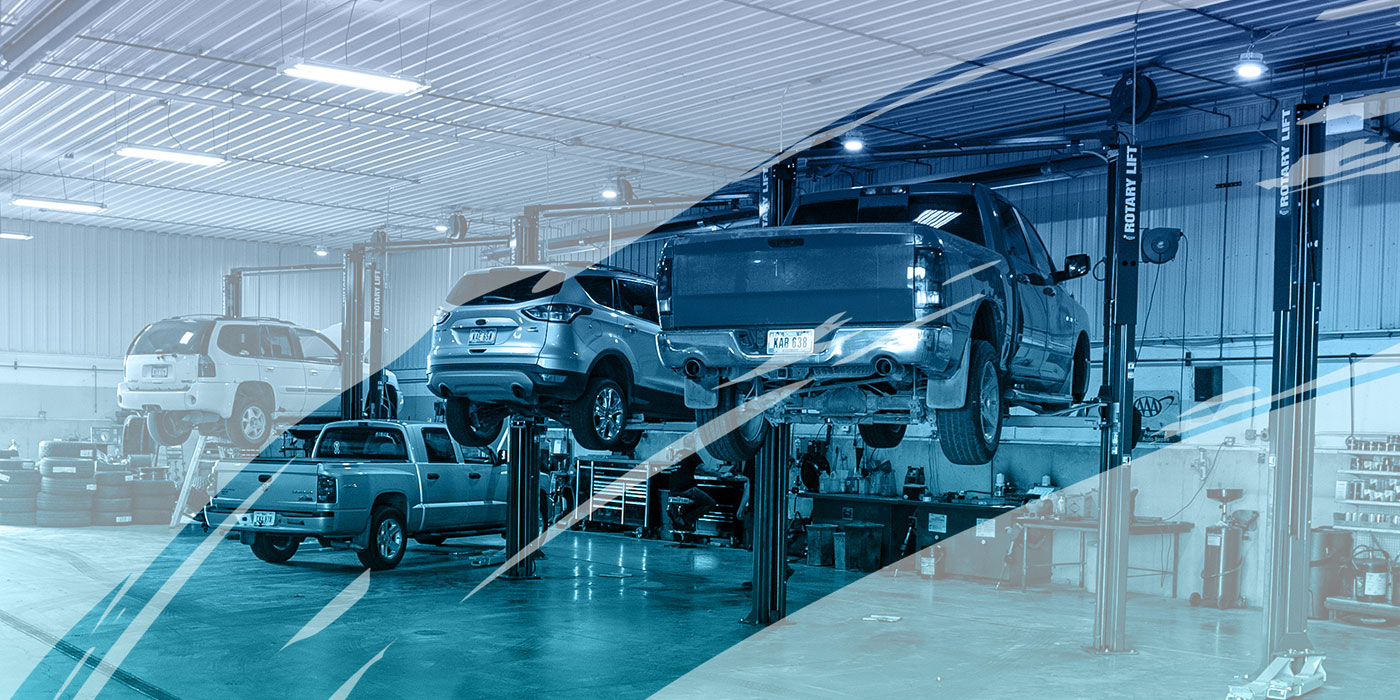When was the last time you pulled in a car with a drip underneath the front and a strong sweet smell that meets you as you open the hood? “It must have a coolant leak,” you think to yourself, and sure enough, the coolant level is low. To us, as technicians, it was obvious, but more often than not, our customer wasn’t even aware there was a problem.
Did they not see the drip or smell the smell? We sometimes wonder. Or did they notice a symptom and just simply ignore it? Maybe it was from someone else’s car. After all, they just get in the car, start it and drive it. There were no warning lights. Maintenance is not their concern.
As technicians, we never ignore our cars, and we shouldn’t ignore our equipment. But in the shop, if there’s one thing that we may be guilty of ignoring, it’s our air tools and compressors.
A key to compressor maintenance is in the inspection. The closer an eye you keep on it, the more likely you will notice a problem developing early, saving time and expense.
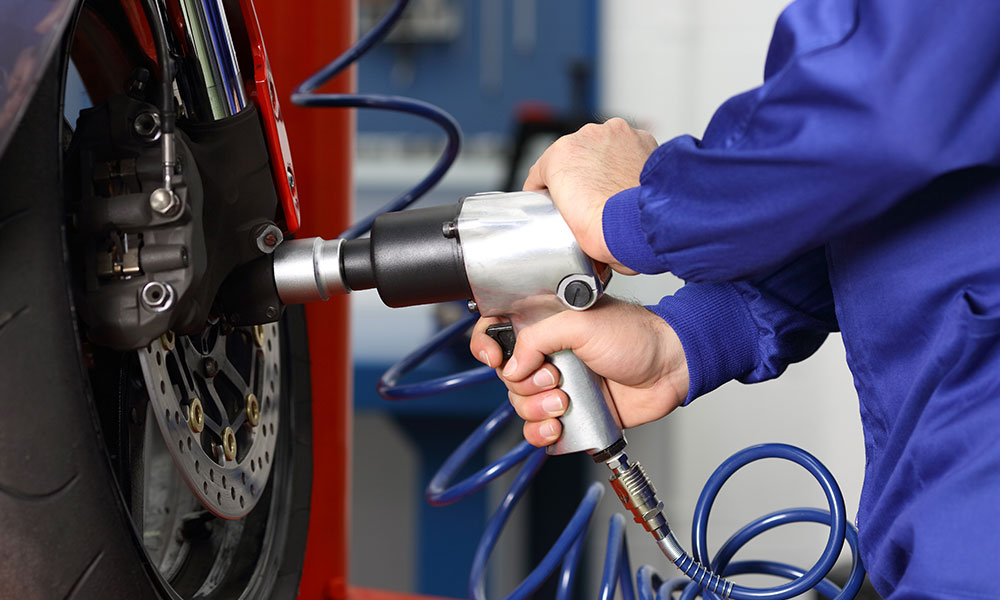
Of course, I can’t speak for everyone, I know some of us really stay on top of maintaining them, but the truth is, compressors and air tools take more abuse than anything else in the shop and, for some reason, a lot of them don’t get the maintenance they should.
We use our air tools relentlessly for the heaviest and most difficult of jobs. Air tools have the advantage of running nonstop compared to a cordless tool, so if we’re deep into something serious, we’re probably using air tools. Then we lower them to the floor when we need both hands — and sometimes not so gently. Or we throw them over to the bench, and sometimes slide them across the floor to the other side of the car. Oh yeah, and did we oil them before and after? It just takes a few seconds, but who has time? There’s a job to get done. I have to admit I’ve been guilty of all of the above at some point in time. My air tools get more abuse than anything else.
Then there’s the poor air compressor. Duty cycle, cool-down time, we all know the reason for it, but again, there’s a job to do. We’ll work that compressor to the bone and think a minute here and there is good for cool down.
Hearing this, tool dealers and compressor manufacturers cringe. Is it obvious to us that we should be doing more maintenance than we do? Most likely. Are we just ignoring it like some of our customers do with their cars? Most likely.
So, what are the obvious maintenance items we should be performing and how often? What about the not-so obvious?
Air Tools
Air tools should be lubricated every night before they are put away. Although it’s safe to say most of us know we should be lubricating them, it’s when that might qualify as the not-so obvious. I used to think they should be lubed only before use, until it was explained to me. It never hurts them at any point, but after using them, especially for a long period of time, the thin film of lubricant on the inside has been mostly washed away by contaminants and moisture in the air.
Instead of leaving that inside your tools overnight, a few drops of air tool oil and a quick blip of the trigger will coat the inside of the tool. Air tool oil is specifically designed to remove debris and deposits that can slow down the tool, but also to inhibit rust and prevent moisture buildup. Without a pre-storage oiling, moisture and contaminants have all night, all weekend or even longer if it’s a tool you don’t use much, to corrode and gum up the inside.
If there’s a grease fitting, it’s adequate on most tools to grease them once a month, especially using newer synthetic greases, but that’s also for standard usage. On the ones that see non-stop action, more often is always better.
Air Hoses
Air hoses are a quick subject, but there are keys to proper maintenance. The biggest factor is grease and oil. They are corrosive to the hose and should be cleaned off daily. The best product to use is a silicone spray. It will help loosen and lift the grease and oil off the hose, then leave a clear, non-toxic film on the hose that will protect it until you wipe it down the next day.
Body shops won’t want to get anywhere near it however, and neither will you if you do any kind of painting.
Air leaks are a common problem that we sometimes ignore. Usually, they are associated with the end of a hose or the fitting on the hose or air tool. Even though they are obvious, you can always seem to wiggle the fitting or hose and make them stop. Why we seem to put up with this for a while before we choose to repair the problem is beyond me, but I know I do.
Leaks should be fixed immediately when we notice them. What we generally don’t think of is how much extra time the compressor will run to recover the lost air from these leaks. It might not seem like much but could really add up to multiple running cycles for a compressor over the course of a leak, which adds up to a higher electrical bill and a compressor that starts out hot in the morning after it runs extra-long to fill an empty tank.

Compressors
Without an air compressor, most shops are dead in the water. If something happens and they are down, we are scrambling to get them working again, but as soon as they’re going, we easily fall back into the routine of ignoring them.
Rotary compressors can run at 100% duty cycle, meaning they can run all the time. Reciprocating or piston-type air compressors all have a duty cycle, meaning they must have a rest period to cool off. Either type, however, requires regular maintenance, much of which involves only periodic inspection, but some things differ between the two.
The common service areas for a reciprocating compressor should be familiar to most technicians. Regular oil level and leak checks, draining the water in the tank and inspecting the belts should be part of a daily routine, and it just takes a few minutes.
Belt adjustment and a more thorough inspection of all fasteners and filters should be performed on a monthly basis. Oil changes should be performed based on the recommendations of the manufacturer, but if you don’t know their maintenance schedule or have a specific way to track it, such as an hour-meter, it’s not going to hurt it to change it every few months. Plus, it’s usually a quick drain and fill — cheap insurance against buying a new compressor.
If your compressor is in a room that doesn’t have much airflow, it won’t have the opportunity to cool down as quickly as it should. If you can install a fan to draw air through the room and vent it outside, it will make a big difference to the life of the compressor. Over the winter months, if you redirect the venting into another area of the shop, you won’t lose any heat to the outside. It will keep the compressor cooler but redistribute the warm air inside.
Rotary compressors differ slightly in their requirements. They have longer service intervals since they don’t build heat like a traditional piston-type, but they do require regular maintenance and it is very specific. You may consider it even more critical because the longer you go in between service, the easier it is to forget about it.
A key to maintenance, as with a piston-type compressor, is in the inspection. The closer an eye you keep on it, the more likely you will notice a problem developing early on which can generally be repaired quickly and inexpensively.
Inspect the oil level often and top it off as necessary. Keep an eye on the compressor room temperature. A thermometer is a good idea so you can increase ventilation if necessary. Rotary compressors have very specific service intervals, and increased room temperature will shorten the time between service intervals.
Inspect and clean inlet filters as well as cooler pre-filters if equipped. Check and adjust belts on a regular basis.
Greasing the motor bearings is very important but be sure to use the exact grease specified by the manufacturer. Not all grease is completely compatible and mixing them can reduce the effectiveness and cause some very expensive problems.
In addition to the type of grease, it’s important to make sure the correct amount of grease is used and applied according to specification. Not enough will starve the bearings for lubrication and damage them and too much can prevent proper movement of the bearings and cause damage as well.
Air tool and equipment maintenance may or may not be obvious but ignore it and it will quickly become apparent that you shouldn’t have. TS

